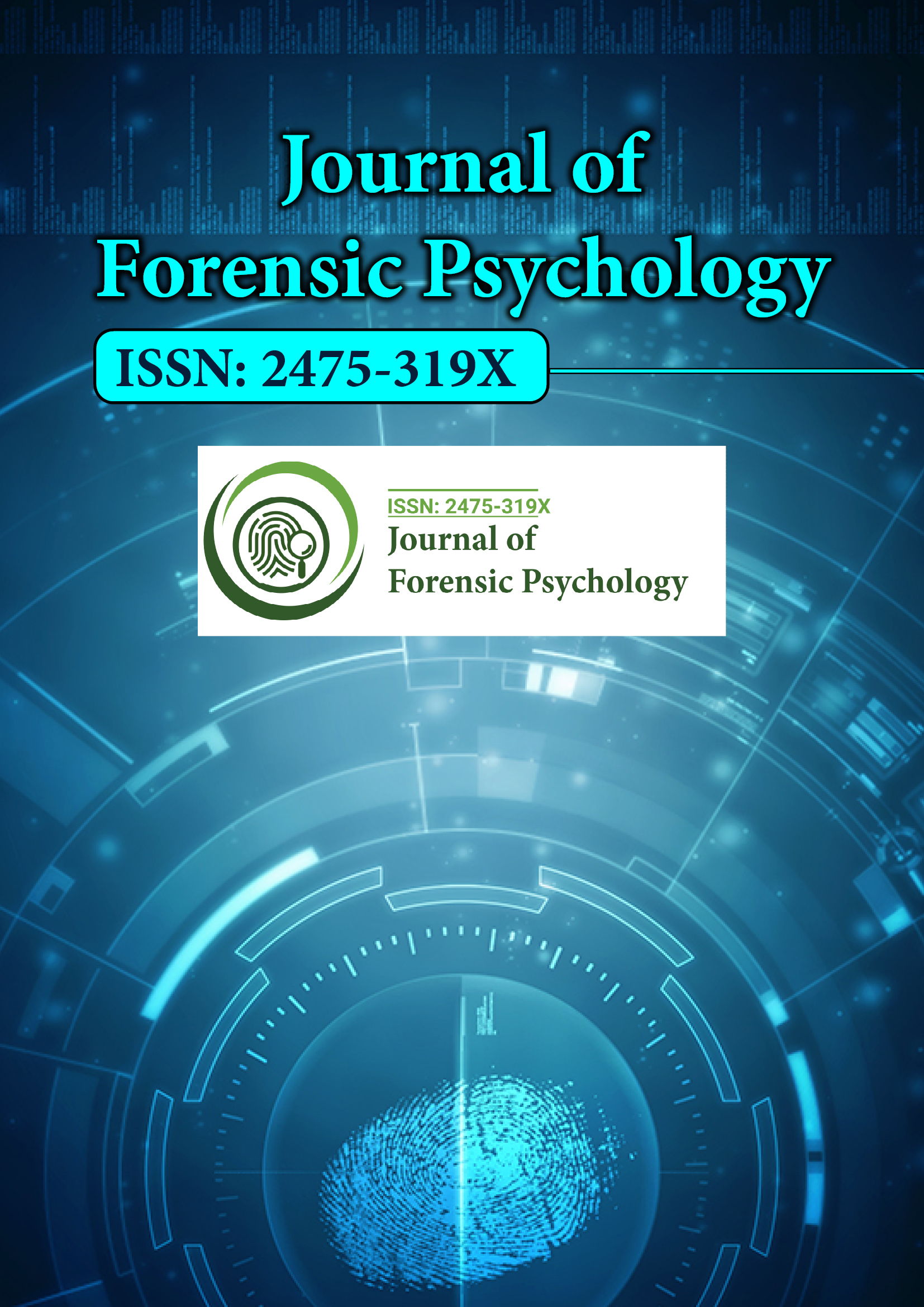Я«ЋЯ»ЂЯ«▒Я«┐Я«»Я«┐Я«ЪЯ«фЯ»ЇЯ«фЯ«ЪЯ»ЇЯ«ЪЯ«цЯ»Ђ
- RefSeek
- Я«╣Я««Я»ЇЯ«ЪЯ«ЙЯ«░Я»ЇЯ«ЪЯ»Ї Я«фЯ«▓Я»ЇЯ«ЋЯ«▓Я»ѕЯ«ЋЯ»ЇЯ«ЋЯ«┤Я«ЋЯ««Я»Ї
- EBSCO AZ
- Я«фЯ«фЯ»ЇЯ«│Я«ЙЯ«ЕЯ»ЇЯ«ЋЯ«│Я»Ї
- Я««Я«░Я»ЂЯ«цЯ»ЇЯ«цЯ»ЂЯ«хЯ«ЋЯ»Ї Я«ЋЯ«▓Я»ЇЯ«хЯ«┐ Я««Я«▒Я»ЇЯ«▒Я»ЂЯ««Я»Ї Я«єЯ«░Я«ЙЯ«»Я»ЇЯ«џЯ»ЇЯ«џЯ«┐Я«ЋЯ»ЇЯ«ЋЯ«ЙЯ«Е Я«юЯ»єЯ«ЕЯ»ђЯ«хЯ«Й Я«ЁЯ«▒Я«ЋЯ»ЇЯ«ЋЯ«ЪЯ»ЇЯ«ЪЯ«│Я»ѕ
- Я«»Я»ѓЯ«░Я»І Я«фЯ«фЯ»Ї
- Я«ЋЯ»ѓЯ«ЋЯ»ЂЯ«│Я»Ї Я«ИЯ»ЇЯ«ЋЯ«ЙЯ«▓Я«░Я»Ї
Я«фЯ«»Я«ЕЯ»ЂЯ«│Я»ЇЯ«│ Я«ЄЯ«БЯ»ѕЯ«фЯ»ЇЯ«фЯ»ЂЯ«ЋЯ«│Я»Ї
- Я«еЯ»ІЯ«ЋЯ»ЇЯ«ЋЯ««Я»Ї Я««Я«▒Я»ЇЯ«▒Я»ЂЯ««Я»Ї Я«еЯ»ІЯ«ЋЯ»ЇЯ«ЋЯ««Я»Ї
- Я«џЯ«Ћ Я««Я«цЯ«┐Я«фЯ»ЇЯ«фЯ«ЙЯ«»Я»ЇЯ«хЯ»Ђ Я«џЯ»єЯ«»Я«▓Я»ЇЯ««Я»ЂЯ«▒Я»ѕ
- Я«ЁЯ«ЪЯ»ЇЯ«ЪЯ«хЯ«БЯ»ѕЯ«фЯ»ЇЯ«фЯ«ЪЯ»ЂЯ«цЯ»ЇЯ«цЯ»ЂЯ«цЯ«▓Я»Ї Я««Я«▒Я»ЇЯ«▒Я»ЂЯ««Я»Ї Я«ЋЯ«ЙЯ«фЯ»ЇЯ«фЯ«ЋЯ«фЯ»ЇЯ«фЯ«ЪЯ»ЂЯ«цЯ»ЇЯ«цЯ»ЂЯ«цЯ«▓Я»Ї
- Я«фЯ»іЯ«░Я»ЂЯ«│Я«ЪЯ«ЋЯ»ЇЯ«ЋЯ««Я»Ї
- Я«ЋЯ»ѕЯ«»Я»єЯ«┤Я»ЂЯ«цЯ»ЇЯ«цЯ»ЂЯ«фЯ»Ї Я«фЯ«┐Я«░Я«цЯ«┐Я«»Я»ѕ Я«џЯ««Я«░Я»ЇЯ«фЯ»ЇЯ«фЯ«┐Я«ЋЯ»ЇЯ«ЋЯ«хЯ»ЂЯ««Я»Ї
- Я«ЅЯ«ЎЯ»ЇЯ«ЋЯ«│Я»Ї Я«ЋЯ«ЙЯ«ЋЯ«┐Я«цЯ«цЯ»ЇЯ«цЯ»ѕЯ«ЋЯ»Ї Я«ЋЯ«БЯ»ЇЯ«ЋЯ«ЙЯ«БЯ«┐Я«ЋЯ»ЇЯ«ЋЯ«хЯ»ЂЯ««Я»Ї
Я«ЄЯ«еЯ»ЇЯ«цЯ«фЯ»Ї Я«фЯ«ЋЯ»ЇЯ«ЋЯ«цЯ»ЇЯ«цЯ»ѕЯ«фЯ»Ї Я«фЯ«ЋЯ«┐Я«░Я«хЯ»ЂЯ««Я»Ї
Я«юЯ«░Я»ЇЯ«ЕЯ«▓Я»Ї Я«ЃЯ«фЯ»ЇЯ«│Я»ѕЯ«»Я«░Я»Ї

Я«ЁЯ«БЯ»ЂЯ«ЋЯ«▓Я»Ї Я«ЄЯ«цЯ«┤Я»ЇЯ«ЋЯ«│Я»ѕЯ«цЯ»Ї Я«цЯ«┐Я«▒Я«ЋЯ»ЇЯ«ЋЯ«хЯ»ЂЯ««Я»Ї
- Я«ЅЯ«БЯ«хЯ»Ђ Я««Я«▒Я»ЇЯ«▒Я»ЂЯ««Я»Ї Я«іЯ«ЪЯ»ЇЯ«ЪЯ«џЯ»ЇЯ«џЯ«цЯ»ЇЯ«цЯ»Ђ
- Я«ЅЯ«»Я«┐Я«░Я»ЇЯ«хЯ»ЄЯ«цЯ«┐Я«»Я«┐Я«»Я«▓Я»Ї
- Я«ЋЯ«ЙЯ«▓Я»ЇЯ«еЯ«ЪЯ»ѕ Я«ЁЯ«▒Я«┐Я«хЯ«┐Я«»Я«▓Я»Ї
- Я«џЯ»ЂЯ«▒Я»ЇЯ«▒Я»ЂЯ«џЯ»ЇЯ«џЯ»ѓЯ«┤Я«▓Я»Ї Я«ЁЯ«▒Я«┐Я«хЯ«┐Я«»Я«▓Я»Ї
- Я«еЯ«░Я««Я»ЇЯ«фЯ«┐Я«»Я«▓Я»Ї & Я«ЅЯ«│Я«хЯ«┐Я«»Я«▓Я»Ї
- Я«еЯ«░Я»ЇЯ«џЯ«┐Я«ЎЯ»Ї & Я«╣Я»єЯ«▓Я»ЇЯ«цЯ»Ї Я«ЋЯ»ЄЯ«░Я»Ї
- Я«еЯ»ІЯ«»Я»єЯ«цЯ«┐Я«░Я»ЇЯ«фЯ»ЇЯ«фЯ»Ђ Я««Я«▒Я»ЇЯ«▒Я»ЂЯ««Я»Ї Я«еЯ»ЂЯ«БЯ»ЇЯ«БЯ»ЂЯ«»Я«┐Я«░Я«┐Я«»Я«▓Я»Ї
- Я«фЯ«»Я»І Я«ЄЯ«ЕЯ»ЇЯ«ЃЯ«фЯ«░Я»ЇЯ««Я»ЄЯ«ЪЯ«┐Я«ЋЯ»ЇЯ«ИЯ»Ї & Я«џЯ«┐Я«ИЯ»ЇЯ«ЪЯ««Я»ЇЯ«ИЯ»Ї Я«фЯ«»Я«ЙЯ«▓Я«юЯ«┐
- Я«фЯ»іЯ«цЯ»Ђ Я«ЁЯ«▒Я«┐Я«хЯ«┐Я«»Я«▓Я»Ї
- Я«фЯ»іЯ«░Я»ЂЯ«│Я»Ї Я«ЁЯ«▒Я«┐Я«хЯ«┐Я«»Я«▓Я»Ї
- Я«фЯ»іЯ«▒Я«┐Я«»Я«┐Я«»Я«▓Я»Ї
- Я««Я«░Я«фЯ«┐Я«»Я«▓Я»Ї & Я««Я»ѓЯ«▓Я«ЋЯ»ЇЯ«ЋЯ»ѓЯ«▒Я»Ђ Я«ЅЯ«»Я«┐Я«░Я«┐Я«»Я«▓Я»Ї
- Я««Я«░Я»ЂЯ«цЯ»ЇЯ«цЯ»ЂЯ«х Я«ЁЯ«▒Я«┐Я«хЯ«┐Я«»Я«▓Я»Ї
- Я««Я«░Я»ЂЯ«цЯ»ЇЯ«цЯ»ЂЯ«х Я«ЁЯ«▒Я«┐Я«хЯ«┐Я«»Я«▓Я»Ї
- Я««Я«░Я»ЂЯ«еЯ»ЇЯ«цЯ»Ђ Я«ЁЯ«▒Я«┐Я«хЯ«┐Я«»Я«▓Я»Ї
- Я«хЯ«БЯ«┐Я«Ћ Я««Я»ЄЯ«▓Я«ЙЯ«БЯ»ЇЯ««Я»ѕ
- Я«хЯ«┐Я«хЯ«џЯ«ЙЯ«»Я««Я»Ї Я««Я«▒Я»ЇЯ«▒Я»ЂЯ««Я»Ї Я««Я»ђЯ«ЕЯ»Ї Я«хЯ«│Я«░Я»ЇЯ«фЯ»ЇЯ«фЯ»Ђ
- Я«хЯ»ЄЯ«цЯ«┐Я«»Я«┐Я«»Я«▓Я»Ї
Я«џЯ»ЂЯ«░Я»ЂЯ«ЋЯ»ЇЯ«ЋЯ««Я»Ї
Я«ЋЯ»ЂЯ«▒Я»ЇЯ«▒Я«хЯ«┐Я«»Я«▓Я»Ї Я«еЯ«ЪЯ«хЯ«ЪЯ«┐Я«ЋЯ»ЇЯ«ЋЯ»ѕЯ«ЋЯ«│Я«┐Я«▓Я»Ї Я«єЯ«»Я»ЇЯ«хЯ»Ђ Я«џЯ»єЯ«»Я»ЇЯ«»Я«фЯ»ЇЯ«фЯ«ЪЯ»ЇЯ«Ъ Я«еЯ«фЯ«░Я«┐Я«ЕЯ»Ї Я«еЯ«┐Я«ЋЯ«┤Я»ЇЯ«хЯ»ЂЯ«ЋЯ«│Я»ѕ Я««Я»ђЯ«БЯ»ЇЯ«ЪЯ»ЂЯ««Я»Ї Я«ЅЯ«░Я»ЂЯ«хЯ«ЙЯ«ЋЯ»ЇЯ«ЋЯ»ЂЯ««Я»ЇЯ«фЯ»ІЯ«цЯ»Ђ Я«еЯ««Я»ЇЯ«фЯ«ЋЯ«цЯ»ЇЯ«цЯ«ЕЯ»ЇЯ««Я»ѕЯ«»Я«┐Я«ЕЯ»Ї Я«ЅЯ«│Я«хЯ«┐Я«»Я«▓Я»Ї Я«ЁЯ«▒Я«┐Я«ЋЯ»ЂЯ«▒Я«┐Я«ЋЯ«│Я«┐Я«ЕЯ»Ї Я«фЯ«ЋЯ»ЂЯ«фЯ»ЇЯ«фЯ«ЙЯ«»Я»ЇЯ«хЯ»Ђ
Я«еЯ«ЪЯ«ЙЯ«▓Я«┐Я«»Я«Й Я«цЯ»єЯ«░Я»ЄЯ«иЯ»ЇЯ«ЋЯ»ЄЯ«хЯ«┐Я«џЯ»Ї
Я«цЯ«ЪЯ«»Я«хЯ«┐Я«»Я«▓Я»Ї Я«ЅЯ«│Я«хЯ«┐Я«»Я«▓Я«ЙЯ«│Я«░Я»ЇЯ«ЋЯ«│Я«ЙЯ«▓Я»Ї Я«ЋЯ«цЯ»ѕЯ«»Я«┐Я«ЕЯ»Ї Я«фЯ«ЋЯ»ЂЯ«фЯ»ЇЯ«фЯ«ЙЯ«»Я»ЇЯ«хЯ»Ђ Я«еЯ«ЪЯ«цЯ»ЇЯ«цЯ»ЂЯ««Я»Ї Я«еЯ«ЪЯ»ѕЯ««Я»ЂЯ«▒Я»ѕЯ«»Я«┐Я«▓Я»Ї Я«џЯ«ЙЯ«ЪЯ»ЇЯ«џЯ«┐Я«»Я«цЯ»ЇЯ«цЯ«┐Я«ЕЯ»Ї Я«еЯ««Я»ЇЯ«фЯ«ЋЯ«цЯ»ЇЯ«цЯ«ЕЯ»ЇЯ««Я»ѕЯ«»Я«┐Я«ЕЯ»Ї Я«ЅЯ«│Я«хЯ«┐Я«»Я«▓Я»Ї Я««Я«цЯ«┐Я«фЯ»ЇЯ«фЯ»ђЯ«ЪЯ»ЇЯ«ЪЯ«┐Я«ЕЯ»Ї Я«џЯ«┐Я«▓ Я«ЁЯ««Я»ЇЯ«џЯ«ЎЯ»ЇЯ«ЋЯ«│Я»ѕ Я«ЄЯ«еЯ»ЇЯ«ц Я«ЋЯ«ЪЯ»ЇЯ«ЪЯ»ЂЯ«░Я»ѕ Я«ЋЯ«░Я»ЂЯ«цЯ»ЂЯ«ЋЯ«┐Я«▒Я«цЯ»Ђ. Я«иЯ«фЯ»ІЯ«хЯ«▓Я»ІЯ«хЯ»Ї VA Я«ЄЯ«ЕЯ»Ї Я«џЯ«ЪЯ»ЇЯ«Ъ Я«еЯ«ЪЯ»ѕЯ««Я»ЂЯ«▒Я»ѕЯ«»Я«┐Я«▓Я»Ї Я«џЯ«ЙЯ«ЪЯ»ЇЯ«џЯ«┐Я«»Я«цЯ»ЇЯ«цЯ«┐Я«ЕЯ»Ї Я«еЯ««Я»ЇЯ«фЯ«ЋЯ«цЯ»ЇЯ«цЯ«ЕЯ»ЇЯ««Я»ѕЯ«»Я«┐Я«ЕЯ»Ї Я«ЅЯ«│Я«хЯ«┐Я«»Я«▓Я»Ї Я««Я«цЯ«┐Я«фЯ»ЇЯ«фЯ»ђЯ«ЪЯ»ЇЯ«ЪЯ«┐Я«▒Я»ЇЯ«ЋЯ«ЙЯ«Е Я«еЯ»ЂЯ«ЪЯ»ЇЯ«фЯ«цЯ»ЇЯ«цЯ«┐Я«ЕЯ»Ї Я«фЯ»іЯ«цЯ»ЂЯ«хЯ«ЙЯ«Е Я«фЯ«ЪЯ»ЇЯ«ЪЯ«┐Я«»Я«▓Я«┐Я«▓Я«┐Я«░Я»ЂЯ«еЯ»ЇЯ«цЯ»Ђ Я«еЯ««Я»ЇЯ«фЯ«ЋЯ«цЯ»ЇЯ«цЯ«ЕЯ»ЇЯ««Я»ѕЯ«»Я«┐Я«ЕЯ»Ї Я«џЯ«┐Я«▓ Я«ЁЯ«▒Я«┐Я«ЋЯ»ЂЯ«▒Я«┐Я«ЋЯ«│Я»ѕ Я«ЋЯ«ЪЯ»ЇЯ«ЪЯ»ЂЯ«░Я»ѕ Я«хЯ«┐Я«хЯ«ЙЯ«цЯ«┐Я«ЋЯ»ЇЯ«ЋЯ«┐Я«▒Я«цЯ»Ђ. Я««Я«▒Я»ЇЯ«▒Я»ЂЯ««Я»Ї Я«еЯ«┐Я«фЯ«еЯ»ЇЯ«цЯ«ЕЯ»ѕЯ«ЋЯ»ЇЯ«ЋЯ»ЂЯ«ЪЯ»ЇЯ«фЯ«ЪЯ»ЇЯ«Ъ Я«еЯ««Я»ЇЯ«фЯ«ЋЯ«цЯ»ЇЯ«цЯ«ЕЯ»ЇЯ««Я»ѕЯ«»Я«▒Я»ЇЯ«▒ (Я«цЯ«хЯ«▒Я«ЙЯ«Е). Я«ЄЯ«еЯ»ЇЯ«ц Я«ЄЯ«░Я«БЯ»ЇЯ«ЪЯ»Ђ Я«ЪЯ«┐Я«░Я«ЙЯ«ЕЯ»ЇЯ«ИЯ»ЇЯ«ЋЯ«┐Я«░Я«┐Я«фЯ»ЇЯ«ЪЯ»Ї Я«ЋЯ»ЂЯ«┤Я»ЂЯ«хЯ»ЂЯ««Я»Ї Я«хЯ«┐Я«хЯ«░Я«┐Я«фЯ»ЇЯ«фЯ»ЂЯ«ЋЯ«│Я«┐Я«ЕЯ»Ї Я«еЯ««Я»ЇЯ«фЯ«ЋЯ«цЯ»ЇЯ«цЯ«ЕЯ»ЇЯ««Я»ѕЯ«»Я«┐Я«ЕЯ»Ї Я«фЯ«┐Я«ЕЯ»ЇЯ«хЯ«░Я»ЂЯ««Я»Ї Я«ЁЯ«▒Я«┐Я«ЋЯ»ЂЯ«▒Я«┐Я«ЋЯ«│Я«┐Я«ЕЯ»Ї Я«ЄЯ«░Я»ЂЯ«фЯ»ЇЯ«фЯ»Ђ Я«ЁЯ«▓Я»ЇЯ«▓Я«цЯ»Ђ Я«ЄЯ«▓Я»ЇЯ«▓Я«ЙЯ««Я»ѕЯ«ЋЯ»ЇЯ«ЋЯ»Ђ Я«ЈЯ«▒Я»ЇЯ«ф Я«фЯ«ЋЯ»ЂЯ«фЯ»ЇЯ«фЯ«ЙЯ«»Я»ЇЯ«хЯ»Ђ Я«џЯ»єЯ«»Я»ЇЯ«»Я«фЯ»ЇЯ«фЯ«ЪЯ»ЇЯ«ЪЯ«цЯ»Ђ: Я«ЋЯ«ЙЯ«ЪЯ»ЇЯ«џЯ«┐ Я«цЯ«ЋЯ«хЯ«▓Я»Ї; Я«џЯ»єЯ«хЯ«┐Я«хЯ«┤Я«┐ Я«цЯ«ЋЯ«хЯ«▓Я»Ї; Я«хЯ«ЙЯ«џЯ«ЕЯ»ѕ Я«цЯ»іЯ«ЪЯ«░Я»ЇЯ«фЯ«ЙЯ«Е Я«цЯ«ЋЯ«хЯ«▓Я»ЇЯ«ЋЯ«│Я»Ї; Я«џЯ»ЂЯ«хЯ»ѕЯ«ЋЯ«│Я»Ї Я«цЯ»іЯ«ЪЯ«░Я»ЇЯ«фЯ«ЙЯ«Е Я«цЯ«ЋЯ«хЯ«▓Я»ЇЯ«ЋЯ«│Я»Ї; Я«ЅЯ«ЪЯ«▓Я»Ї Я«ЅЯ«БЯ«░Я»ЇЯ«хЯ»ЂЯ«ЋЯ«│Я»Ї; Я«фЯ»іЯ«░Я»ЂЯ«│Я»Ї Я«фЯ»іЯ«░Я»ЂЯ«│Я»ЇЯ«ЋЯ«│Я»Ї, Я«ЅЯ«»Я«┐Я«░Я«┐Я«ЕЯ«ЎЯ»ЇЯ«ЋЯ«│Я»Ї, Я«џЯ»ЂЯ«▒Я»ЇЯ«▒Я»ЂЯ«џЯ»ЇЯ«џЯ»ѓЯ«┤Я«▓Я«┐Я«ЕЯ»Ї Я«ЁЯ««Я»ЇЯ«џЯ«ЎЯ»ЇЯ«ЋЯ«│Я»Ї Я«фЯ«▒Я»ЇЯ«▒Я«┐Я«» Я«хЯ«┐Я«│Я«ЋЯ»ЇЯ«ЋЯ««Я»Ї; Я«њЯ«░Я»ЂЯ«хЯ«░Я«┐Я«ЕЯ»Ї Я«џЯ»іЯ«еЯ»ЇЯ«ц Я«џЯ»єЯ«»Я«▓Я»ЇЯ«ЋЯ«│Я«┐Я«ЕЯ»Ї Я«хЯ«┐Я«│Я«ЋЯ»ЇЯ«ЋЯ««Я»Ї; Я«еЯ»ЄЯ«░Я«цЯ»ЇЯ«цЯ«┐Я«▓Я»Ї Я«њЯ«░Я»ЂЯ«хЯ«░Я«┐Я«ЕЯ»Ї Я«џЯ»єЯ«»Я«▓Я»ЇЯ«ЋЯ«│Я»ѕ Я«ЄЯ«БЯ»ѕЯ«цЯ»ЇЯ«цЯ«▓Я»Ї; Я«њЯ«░Я»ЂЯ«хЯ«░Я«┐Я«ЕЯ»Ї Я«џЯ»єЯ«»Я«▓Я»ЇЯ«ЋЯ«│Я»ѕ Я«хЯ«┐Я«БЯ»ЇЯ«хЯ»єЯ«│Я«┐Я«»Я«┐Я«▓Я»Ї Я«ЄЯ«БЯ»ѕЯ«цЯ»ЇЯ«цЯ«▓Я»Ї; Я«ЅЯ«БЯ«░Я»ЇЯ«џЯ»ЇЯ«џЯ«┐ Я«еЯ«┐Я«▓Я»ѕЯ«ЋЯ«│Я»Ї Я««Я«▒Я»ЇЯ«▒Я»ЂЯ««Я»Ї Я«ЁЯ«хЯ«▒Я»ЇЯ«▒Я«┐Я«ЕЯ»Ї Я«хЯ»єЯ«│Я«┐Я«фЯ»ЇЯ«фЯ«ЙЯ«ЪЯ»ЂЯ«ЋЯ«│Я»Ї; Я«ЅЯ«ЪЯ«▓Я«┐Я«»Я«▓Я»Ї Я«цЯ»ЄЯ«хЯ»ѕЯ«ЋЯ«│Я»Ї, Я««Я«ЙЯ«еЯ«┐Я«▓Я«ЎЯ»ЇЯ«ЋЯ«│Я»Ї, Я«ЁЯ«хЯ«▒Я»ЇЯ«▒Я«┐Я«ЕЯ»Ї Я«хЯ»єЯ«│Я«┐Я«фЯ»ЇЯ«фЯ«ЙЯ«ЪЯ»ЂЯ«ЋЯ«│Я»Ї; Я«еЯ«┐Я«ЋЯ«┤Я»ЇЯ«хЯ«┐Я«ЕЯ»Ї Я«фЯ»ІЯ«цЯ»Ђ Я«јЯ«┤Я»ЂЯ«еЯ»ЇЯ«ц Я«јЯ«БЯ»ЇЯ«БЯ«ЎЯ»ЇЯ«ЋЯ«│Я»Ї; Я«њЯ«░Я»ЂЯ«хЯ«░Я«┐Я«ЕЯ»Ї Я«цЯ»ІЯ«▒Я»ЇЯ«▒Я«цЯ»ЇЯ«цЯ«┐Я«ЕЯ»Ї Я«хЯ«┐Я«│Я«ЋЯ»ЇЯ«ЋЯ««Я»Ї; Я«њЯ«░Я»ЂЯ«хЯ«░Я«┐Я«ЕЯ»Ї Я«јЯ«БЯ»ЇЯ«БЯ«ЎЯ»ЇЯ«ЋЯ«│Я«┐Я«ЕЯ»Ї Я«хЯ«┐Я«│Я«ЋЯ»ЇЯ«ЋЯ««Я»Ї (Я«еЯ»ІЯ«ЋЯ»ЇЯ«ЋЯ«ЎЯ»ЇЯ«ЋЯ«│Я»Ї); Я«ЁЯ«ЪЯ»ѕЯ«»Я«ЙЯ«│Я«ЎЯ»ЇЯ«ЋЯ«│Я»ѕ Я«хЯ»ЄЯ«▒Я»ЂЯ«фЯ«ЪЯ»ЂЯ«цЯ»ЇЯ«цЯ»ЂЯ«цЯ«▓Я»Ї; Я«хЯ«┐Я«хЯ«░Я«ЎЯ»ЇЯ«ЋЯ«│Я»Ї. Я«ЁЯ««Я»ЇЯ«џЯ«ЎЯ»ЇЯ«ЋЯ«│Я»Ї Я«џЯ«░Я«┐ Я«џЯ»єЯ«»Я»ЇЯ«»Я«фЯ»ЇЯ«фЯ«ЪЯ»ЇЯ«ЪЯ«Е Я««Я«▒Я»ЇЯ«▒Я»ЂЯ««Я»Ї Я«ЁЯ«ЪЯ»ѕЯ«»Я«ЙЯ«│Я««Я»Ї Я«ЋЯ«ЙЯ«БЯ«фЯ»ЇЯ«фЯ«ЪЯ»ЇЯ«Ъ Я«ЁЯ««Я»ЇЯ«џЯ«ЎЯ»ЇЯ«ЋЯ«│Я«┐Я«ЕЯ»Ї Я«ЋЯ«БЯ«┐Я«ц Я«фЯ«ЋЯ»ЂЯ«фЯ»ЇЯ«фЯ«ЙЯ«»Я»ЇЯ«хЯ»Ђ Я««Я»ЄЯ«▒Я»ЇЯ«ЋЯ»іЯ«│Я»ЇЯ«│Я«фЯ»ЇЯ«фЯ«ЪЯ»ЇЯ«ЪЯ«цЯ»Ђ. Я«ЋЯ«цЯ»ѕЯ«»Я«┐Я«ЕЯ»Ї Я«еЯ««Я»ЇЯ«фЯ«ЋЯ«цЯ»ЇЯ«цЯ«ЕЯ»ЇЯ««Я»ѕЯ«»Я»ѕ (Я«ЁЯ«▓Я»ЇЯ«▓Я«цЯ»Ђ Я«еЯ««Я»ЇЯ«фЯ«ЋЯ«цЯ»ЇЯ«цЯ«ЕЯ»ЇЯ««Я»ѕЯ«»Я»ѕ) Я««Я«цЯ«┐Я«фЯ»ЇЯ«фЯ»ђЯ«ЪЯ»Ђ Я«џЯ»єЯ«»Я»ЇЯ«»Я»ЂЯ««Я»Ї Я«фЯ»ІЯ«цЯ»Ђ Я«цЯ«ЪЯ«»Я«хЯ«┐Я«»Я«▓Я»Ї Я«ЅЯ«│Я«хЯ«┐Я«»Я«▓Я«ЙЯ«│Я«░Я»ЇЯ«ЋЯ«│Я»Ї Я«фЯ«»Я«ЕЯ»ЇЯ«фЯ«ЪЯ»ЂЯ«цЯ»ЇЯ«цЯ»ЂЯ««Я»Ї Я««Я»ЂЯ«▒Я»ѕЯ«ЋЯ«│Я»Ї Я««Я«▒Я»ЇЯ«▒Я»ЂЯ««Я»Ї Я«еЯ»ЂЯ«ЪЯ»ЇЯ«фЯ«ЎЯ»ЇЯ«ЋЯ«│Я«┐Я«ЕЯ»Ї Я«ЁЯ«▒Я«┐Я«хЯ«┐Я«»Я«▓Я»Ї Я«єЯ«цЯ«ЙЯ«░Я«цЯ»ЇЯ«цЯ»ѕ Я«хЯ«┐Я«░Я«┐Я«хЯ»ЂЯ«фЯ«ЪЯ»ЂЯ«цЯ»ЇЯ«цЯ»ЂЯ«хЯ«цЯ«▒Я»ЇЯ«ЋЯ»Ђ Я«ЄЯ«еЯ»ЇЯ«ц Я«єЯ«░Я«ЙЯ«»Я»ЇЯ«џЯ»ЇЯ«џЯ«┐ Я«џЯ»єЯ«»Я»ЇЯ«»Я«фЯ»ЇЯ«фЯ«Ъ Я«хЯ»ЄЯ«БЯ»ЇЯ«ЪЯ»ЂЯ««Я»Ї.